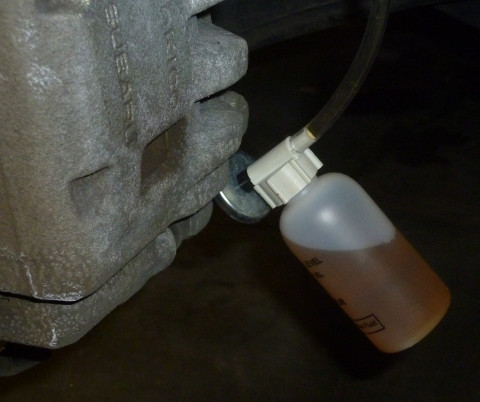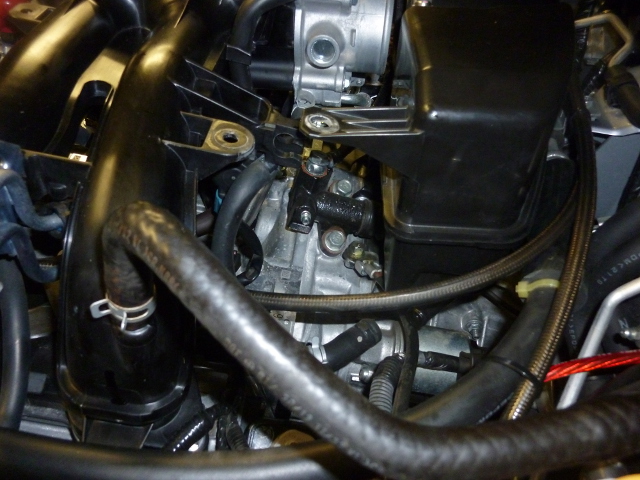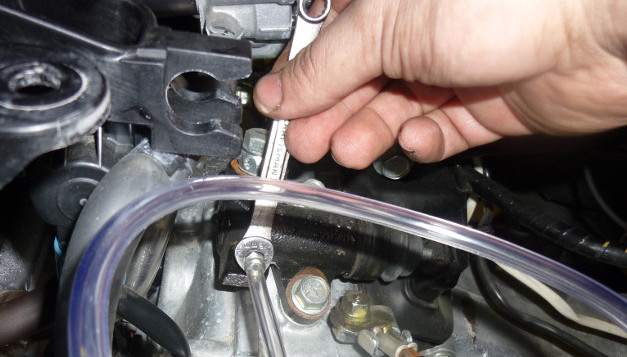Posts and Projects:

Subaru recommends the brake and clutch fluid be changed every 30K miles. For CVT models, this will just be the brake fluid.
The process involves raising each corner of the car, removing the wheel, pushing old fluid out through the bleeder and adding new fluid to the reservoir.
Note that brake fluid attracts moisture from the air, so keep the reservoir and the bottle of new fluid sealed whenever you’re not filling.
This is also a good time to inspect and possibly change the brake pads.
The Impreza takes DOT3 or DOT4 fluid. I bought a 32oz bottle of Valvoline synthetic DOT3/4.
The one man bleeder is a very useful tool, and I recommend it even if you have some help. It holds the fluid drained from the caliper and prevents air from being drawn back into it.
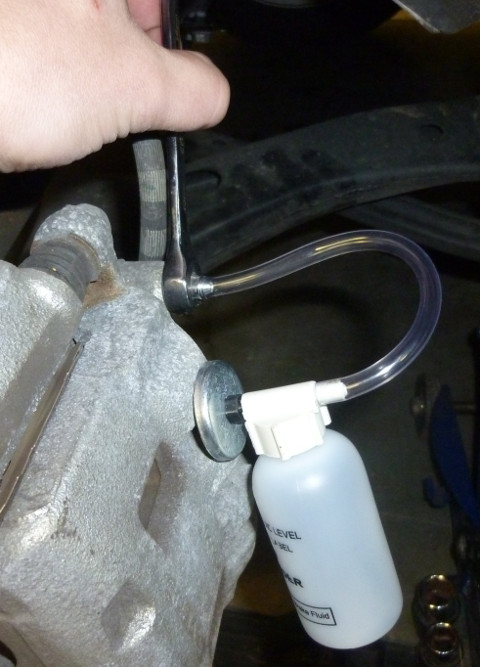 The bleeder can be turned with a 10mm wrench. Use either a flare nut wrench or a box wrench, not an adjustable. If you’re using a box wrench, you’ll have to place it on the bleeder before attaching the bleeder hose.
The bleeder can be turned with a 10mm wrench. Use either a flare nut wrench or a box wrench, not an adjustable. If you’re using a box wrench, you’ll have to place it on the bleeder before attaching the bleeder hose.
Loosen the bleeder just to the point where it can be turned freely. Pump the brake pedal a few times and you’ll the see the bottle fill. When it’s about 70% full, hand tighten the bleeder, unscrew the bottle from its cap, leaving the hose attached to the bleeder, and discard the fluid in the bottle. Top off the brake fluid reservoir, reattach the bottle and repeat this process.
I repeated the process, using roughly a fifth of the bottle for each caliper, slightly more for the rear brakes to compensate for the longer lines. The remainder will be used for the clutch if your car is manual.
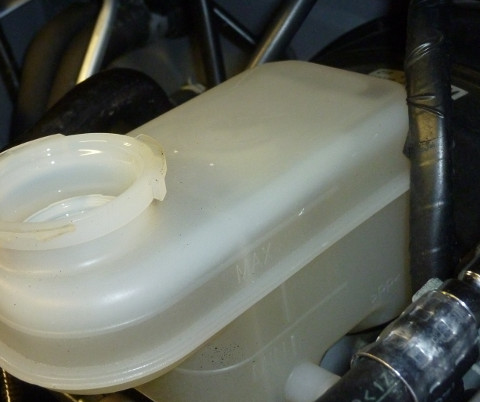 The fluid in my car had a medium yellow color while the new fluid was very pale. In this picture, the reservoir is actually full to the top, but the new fluid hadn’t yet mixed with the old. The color change was noticeable at the bleeder hose after a few ounces were bled out.
The fluid in my car had a medium yellow color while the new fluid was very pale. In this picture, the reservoir is actually full to the top, but the new fluid hadn’t yet mixed with the old. The color change was noticeable at the bleeder hose after a few ounces were bled out.
For manual transmissions, the clutch slave (or “operating cylinder”, as Subaru calls it) is located at the top of the bell housing, underneath the air intake.

The intake is easily removed by loosening the hose clamp connecting it to the throttle body, a plastic snap fastener, and the crankcase vent hose at the bottom. You can push it out the way at that point, or also loosen the hose clamp at the air box and remove it from the car completely.
The clutch bleeder is 8mm, smaller than those on the calipers. The bleeding cycle goes like this:
1. Loosen the bleeder
2. Push the clutch pedal down. It will stay down.
3. Hand tighten the bleeder.
4. Remove, drain and reattach the bleeder bottle if necessary (every 10 cycles or so).
5. Slowly pull the clutch pedal up by hand.
Just as in the calipers, eventually the new pale fluid made its way through the slave and at that point I stopped.
Clean up any fluid spilled on the engine, reattach the intake, and you’re done!

All trademarks cited here are the property of their respective owners


